RISK ASSESSMENT
SOCOTEC answers DSEAR compliance FAQs
Here, SOCOTEC provides guidance on Dangerous Substances and Explosive Atmosphere Regulations (DSEAR) compliance through answering FAQs and providing insight on its risk assessment.
What is DSEAR?
DSEAR aims to prevent or limit the harmful effects of fires, explosions, and similar energy-releasing events, as well as corrosion to metals. These regulations specifically focus on controlling and managing the risks associated with dangerous substances in the workplace. By implementing the necessary measures, businesses can ensure the safety of their employees, prevent accidents and mitigate the potential damage caused by such incidents.
What is ATEX?
ATEX is short for “Atmospheres Explosibles” and is the name commonly given to the two European directives for controlling explosive atmospheres: directive 99/92/EC (also known as ‘ATEX 137’ or the ‘ATEX workplace directive’) and directive 94/9/ EC (also known as ‘ATEX 95’ or ‘the ATEX equipment directive’). They aim to improve health and safety in workplaces with explosive atmospheres. In the UK, these directives are implemented through DSEAR.
Is DSEAR compliance a legal requirement?
 Yes, compliance with DSEAR is not just a recommendation, but a legal requirement under the Health and Safety at Work etc. Act 1974 (HASWA). This regulation places responsibilities on employers and the self-employed to ensure the safety of individuals in the workplace and protect the public from any risks arising from work activities.
Yes, compliance with DSEAR is not just a recommendation, but a legal requirement under the Health and Safety at Work etc. Act 1974 (HASWA). This regulation places responsibilities on employers and the self-employed to ensure the safety of individuals in the workplace and protect the public from any risks arising from work activities.
With the potential hazards of dangerous substances, such as fire, explosion, and corrosion of metal, compliance with DSEAR is essential to safeguarding people’s safety. DSEAR operates as an enabling act under the HASWA, emphasising the legal obligation for your organisations to adhere to its guidelines and take proactive measures to mitigate risks associated with dangerous substances.
Is a DSEAR risk assessment a legal requirement?
Yes, a DSEAR risk assessment is a legal requirement for most workplaces that deal with hazardous substances. It is important to identify the hazards associated with your work, assess the risks involved, and implement appropriate control measures to ensure the safety of your employees and the public.
Who enforces non-compliance with DSEAR?
Non-compliance with DSEAR is enforced by the Health and Safety Executive (HSE) or Local Authorities, depending on premises allocation under the Health and Safety (Enforcing Authority) Regulations 1998. Further information on non-compliance with DSEAR enforcement can be found here.
What are the potential penalties for not completing a DSEAR risk assessment?
Compliance can sometimes feel like a burden, but it is crucial to emphasise the potential penalties for not completing a DSEAR risk assessment. Non-compliance with DSEAR carries significant consequences, both legally and ethically. The penalties can range from civil to criminal repercussions, underscoring the seriousness of the matter. However, the consequences extend beyond legal implications. Failing to prioritise DSEAR compliance puts people’s safety at risk, which can lead to injuries, and in the worst cases, even fatalities. Furthermore, non-compliance can have detrimental effects on the environment, causing lasting damage and impacting the trust and confidence that customers and stakeholders place in your business.
Can anyone undertake a DSEAR risk assessment?
DSEAR requires employers or self-employed individuals to conduct a risk assessment before starting any new work involving dangerous substances. If your business has five or more employees, you should record the significant findings of the assessment as soon as possible. DSEAR assessors must have suitable knowledge, experience, instruction and training to be considered a ‘competent person’.
Does having a CompEx qualification qualify me to undertake a DSEAR risk assessment?
While the CompEx scheme is beneficial for a DSEAR assessor, it does not measure competence specifically for DSEAR risk assessments. The CompEx scheme has various competency modules and is recognised globally for validating the competency of electrical technicians and engineers in hazardous explosive atmospheres. More recently, CompEx has evolved to include other industry-specific competency assessments.
What level of competence is required to undertake a DSEAR risk assessment?
 Currently, there is no internationally recognised body that certifies an individual’s competence in conducting DSEAR assessments. The concept of a competent person does not have a fixed definition or a specific licensing requirement. However, it is crucial to ensure that these assessments are conducted by qualified professionals who possess the necessary expertise and specialist knowledge of the regulations.
Currently, there is no internationally recognised body that certifies an individual’s competence in conducting DSEAR assessments. The concept of a competent person does not have a fixed definition or a specific licensing requirement. However, it is crucial to ensure that these assessments are conducted by qualified professionals who possess the necessary expertise and specialist knowledge of the regulations.
Assessing competence in this area is challenging, as it involves a combination of knowledge and experience. An ideal DSEAR assessor would have a well-rounded background, encompassing experience from various industries and commercial sectors. They should possess the ability to identify hazards and risks associated with the handling, storage and use of potentially flammable or explosive materials. Furthermore, they need to be proficient in recommending and documenting suitable and sufficient solutions to effectively reduce risks to a responsible and practical level.
While quantifying competence in this field is difficult, it is important that you engage a competent person for DSEAR assessments to ensure accurate and thorough evaluations of the risks associated with dangerous substances. By relying on experienced and knowledgeable individuals, businesses can confidently fulfil their obligations and maintain a safe working environment.
How frequently should a DSEAR risk assessment be reviewed?

Credit : SOCOTEC
While there is no specific timeframe mandated for conducting a DSEAR assessment, it is recommended by the Fire Protection Association (FPA) that you complete a review at intervals not exceeding three years. However, it’s important to consider that the frequency of review may vary depending on different factors and the specific circumstances of your workplace. Regular reviews are crucial, especially when there are changes in your work environment. If your facility deals with hazardous substances or if there are outstanding recommendations from a previous DSEAR assessment, it is advisable to conduct more frequent reviews, such as annually. Additionally, any significant changes in your business operations should trigger a review of your DSEAR risk assessment.
The primary goal is to ensure that your assessment remains up-to-date and relevant to effectively manage risks related to dangerous substances in your workplace.
How do I know if my DSEAR risk assessment is suitable and sufficient?
If you employ five or more people, it is essential to maintain a written record of the significant findings. This record can be kept separately or integrated into the overall assessment under the Management of Health and Safety at Work Regulations 1999. The HSE’s Approved Code of Practice (ACOP) 138, specifically Sections 5 (2) and 5 (3), provides valuable information on what considerations should be included in a suitable assessment.
By following these guidelines and documenting the key findings, you can ensure that your DSEAR risk assessment meets the necessary requirements and covers the important aspects to effectively manage the risks associated with dangerous substances in your workplace.
How do I know if DSEAR applies to my business?
Dangerous substances are any substances used or present at work that could, if not properly controlled, cause harm to people as a result of a fire or explosion or corrosion of metal.
These substances can be found in almost all workplaces, including solvents, paints, varnishes, flammable gases like liquid petroleum gas (LPG), dust from machining and sanding operations, dust from foodstuffs, pressurised gases, and substances corrosive to metal. It’s important to consider other energetic events like runaway exothermic reactions involving chemicals or decomposition of unstable substances, which are also covered by DSEAR.
Whether it’s a factory, construction site, railway, or any other workplace, it’s essential to comply with the relevant DSEAR requirements to ensure the safety of individuals and minimise risks associated with dangerous substances.
As an employer, you have a responsibility to implement control measures to eliminate or reduce risks associated with dangerous substances to the extent reasonably practicable. Where it is not possible to eliminate the risk completely, you must take measures to control risks and mitigate the effects of any harmful event.
The EU CLP Regulation has also introduced changes, classifying more substances as flammable due to increased flashpoint thresholds. This is partly because the upper flashpoint for classification as a flammable liquid has been increased from 55 °C to 60 °C. The changes mean that for example, diesel, gas oil and light heating oils are now classified as flammable liquids.
What are the important factors to consider for ensuring compliance with DSEAR and maintaining workplace safety?
 When considering DSEAR, there are several common factors to consider to ensure safety and compliance these are outlined below:
When considering DSEAR, there are several common factors to consider to ensure safety and compliance these are outlined below:
- Assess whether a flammable atmosphere can exist in your workplace, as this can pose significant risks
- Identify potential ignition sources that could ignite the flammable atmosphere
- Review existing control measures in place to prevent or minimise the risks associated with dangerous substances
- Consider area classification requirements to properly define hazardous zones and implement appropriate safety measures
- Conduct a risk rating to help evaluate the severity of potential hazards and prioritise necessary actions
- Carefully review recommendations provided by experts or regulatory guidelines to ensure the implementation of suitable control measures.
By considering these factors, you can proactively address the risks associated with dangerous substances and promote a safe working environment.
Should area/zonal drawings be prepared for explosive environments?
ATEX hazardous areas, as defined in DSEAR, refer to “any place in which an explosive atmosphere may occur in quantities such as to require special precautions to protect the safety of workers”. Area classification is a method used to analyse and classify environments where explosive gas atmospheres can potentially occur. Its main purpose is to ensure the proper selection and installation of equipment that can be safely used in such environments, considering the properties of flammable materials present.
Having drawings can be highly beneficial in identifying these zones, documenting and maintaining equipment and promoting awareness among individuals interacting with these areas. Ideally, copies of the drawings should be readily available, even posted at the entry points to hazardous areas, along with appropriate signage to reinforce the understanding of the area classifications.
Can a DSEAR risk assessment for installing new equipment on-site be conducted without visiting the site?
If you’re installing new equipment on-site, you might wonder if a DSEAR risk assessment can be completed as a desktop exercise without visiting the site. It is highly recommended that organisations seeking assistance with areas or equipment covered by DSEAR engage as early as possible. While pre-installation project reports and advice can provide valuable support in terms of planning and purchasing new equipment, it is important to note that these are complementary to the risk assessment process. Conducting a thorough DSEAR risk assessment always requires a site visit to properly evaluate the specific conditions and hazards present on-site.
Can a DSEAR risk assessment for changing a process on-site be completed without visiting the site?
Engaging with a competent consultant at the earliest opportunity can potentially result in significant savings. However, it is important to understand that a suitable and sufficient DSEAR assessment cannot be conducted without a site visit. The on-site visit is crucial to assess the specific changes to the process and evaluate the associated risks in order to ensure compliance and safety.
Should a new DSEAR risk assessment be completed when changing a process on-site?
Any significant changes to equipment or processes require a revised DSEAR risk assessment to ensure ongoing compliance and safety.
Is it acceptable to have multiple companies complete DSEAR risk assessments for different equipment/processes?
While DSEAR assessments can be conducted on different equipment in isolation, it is important to have an overall assessment of combined risks. Your business should consider the impact of activities or machinery/plant on each other and have a comprehensive DSEAR assessment.
What are some common misconceptions about DSEAR?
 There are several common misconceptions regarding DSEAR:
There are several common misconceptions regarding DSEAR:
- Many people are unaware of the regulation and believe it does not apply to the majority of workplaces
- It is mistakenly believed that high-risk activities or equipment must involve large volumes of hazardous materials, which is not the case
- Some assume that DSEAR only covers large facilities, but in fact, it includes risk assessments for staff handling even the smallest quantities of flammable liquids
- There is a misconception that DSEAR does not cover natural gas installations, pipe networks, and boiler rooms, whereas it does
- Some are unaware that DSEAR also covers the risks associated with fire and explosion of all batteries on-site
- It is wrongly assumed that it is solely the employer’s responsibility to ensure their contractors are competent in DSEAR if applicable
- Having a DSEAR assessment does not automatically imply compliance with DSEAR. Compliance entails taking action on the recommendations provided in the assessment report.
What information is required to carry out a DSEAR risk assessment?
To conduct a DSEAR risk assessment, the assessor will typically need the following information:
- The nature of your business and any site-specific hazards or personal protective equipment (PPE) requirements
- The size of the site and the number of buildings within it
- Access to previous DSEAR and Fire Risk Assessment reports
- Access to process diagrams and Piping and Instrumentation Diagrams (PIDs)
- The layout of the site, including the arrangement of processes and services
- Access to employee training records related to DSEAR, as well as risk assessments, Safe Systems of Work (SSOW), and Standard Operating Procedures (SOPs)
- Access to all areas of the site, including plant rooms and boiler houses
- A knowledgeable site contact and guide who is familiar with the site’s health and safety arrangements (ideally the site health and safety manager)
- A knowledgeable site contact and guide who has information about the site’s assets and maintenance arrangements (ideally the site maintenance or engineering manager)
- A knowledgeable site contact and guide who understands the site’s processes (ideally the site process engineer and/or production manager)
- A list of the quantities of each flammable material stored on-site, a location map of the materials, and any segregation requirements, as well as Safety Data Sheets (SDS) for the materials.
Please note that the information required to carry out a DSEAR risk assessment will vary from site to site and the information above is a general guideline.
SOCOTEC answers DSEAR compliance FAQs
Here, SOCOTEC provides guidance on Dangerous Substances and Explosive Atmosphere Regulations (DSEAR) compliance through answering FAQs and providing insight on its risk assessment.
Safety & Health Practitioner
SHP - Health and Safety News, Legislation, PPE, CPD and Resources Related Topics
Workers facing uncertain future coupled with health and safety risks, new IOSH report says
Legionella Management: Who can be appointed as RP, DRP, AP or CP?
James Macpherson on risk: ‘More of the same won’t work’

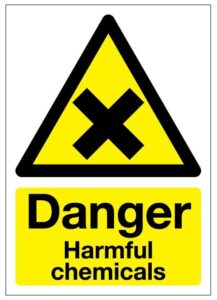 Yes, compliance with DSEAR is not just a recommendation, but a legal requirement under the
Yes, compliance with DSEAR is not just a recommendation, but a legal requirement under the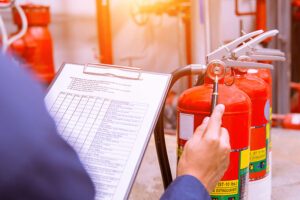 Currently, there is no internationally recognised body that certifies an individual’s competence in conducting DSEAR assessments. The concept of a competent person does not have a fixed definition or a specific licensing requirement. However, it is crucial to ensure that these assessments are conducted by qualified professionals who possess the necessary expertise and specialist knowledge of the regulations.
Currently, there is no internationally recognised body that certifies an individual’s competence in conducting DSEAR assessments. The concept of a competent person does not have a fixed definition or a specific licensing requirement. However, it is crucial to ensure that these assessments are conducted by qualified professionals who possess the necessary expertise and specialist knowledge of the regulations.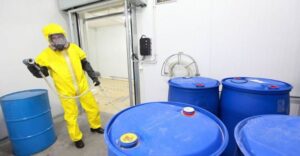
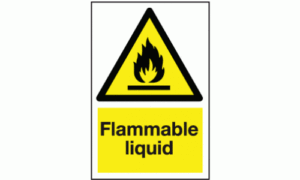 When considering DSEAR, there are several common factors to consider to ensure safety and compliance these are outlined below:
When considering DSEAR, there are several common factors to consider to ensure safety and compliance these are outlined below: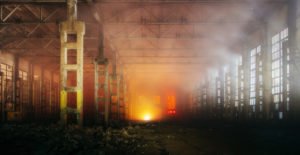 There are several common misconceptions regarding DSEAR:
There are several common misconceptions regarding DSEAR:
What about Product Safety !? With 58% of DSE user operators suffering debilitating levels of screen fatigue, Computer Vision Syndrome, myopic and asthenopic disease!?